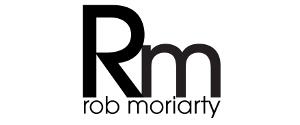When we think of the term social, we automatically think of people gathering. In other words – communicating. On the simplest level, Social Technology is just a method by which we communicate.
We’ve always communicated with each other in one way or another, but what I really want to concentrate on is when and how we first started to communicate our story to large groups of people.
 Mass communication really began when the Gutenberg printing press was invented. The only books around at the time happened to be Bibles, produced in full colour versions, completely by hand, and by monks – the only people educated enough to be able to read and write. The Holy Roman Empire spotted an opportunity to reach masses of people to tell
Mass communication really began when the Gutenberg printing press was invented. The only books around at the time happened to be Bibles, produced in full colour versions, completely by hand, and by monks – the only people educated enough to be able to read and write. The Holy Roman Empire spotted an opportunity to reach masses of people to tell
the story of the Bible, so in effect, the printing press became the earliest form of social technology. It was a much more efficient and controlled method of communicating than by word of mouth, allowing greater consistency of the story than the oral tradition.
As our use of technology evolved and became more sophisticated, our world became smaller. The telegraph allowed us to communicate over hundreds of miles in an instant, using just a few characters and a new language (Morse code). Not unlike texting today, or even Twitter!
Our ability to communicate verbally improved with the telephone, and who would have believed then that we would actually be able to see and talk to someone at the other side of the world! Even the ability to send a document by fax, was considered amazing in its day.
With its basis in email, the internet opened up the possibilities for communication that we have today. But in many ways, social technology isn’t new – it’s been a constant evolution over the centuries, and will continue to evolve.
What’s so significant about what we have today? Apart from the very low cost and high speed of communicating to millions of people all at once, social technologies and networking sites allow us to develop different personalities and appeal to multiple communities. They amplify our voice and our reach, allowing us to extend far beyond our own communities to get our message across. New communities are forming every day, providing an endless supply of people to share our story with, both directly, and as they share them on with others, replicating the oral tradition.
The endless supply of people to communicate with, and an unlimited means of doing so, brings its own challenges. How do we make sure that our story is told clearly and that the message we give is the one that different communities really want to hear? Having unlimited connections and sophisticated technology is all well and good, but it’s a good story that will make people want to listen and pass it on.
Mastering the art of storytelling is one of the skills we need to re-awaken in this new world of communication. We need to change the way we interact with our customers, from telling them about our product to listening to what they want. If we don’t listen, they will tell us (and everyone else) very loudly. So we need to make sure we get it right, as the consequences for our brand can be immediate and long-lasting. The choice of social technologies and how we use them, impacts not only upon us as individuals, but across the whole organisation.
Our chosen social technologies need to be incorporated into the business as an integral part of the marketing strategy, aligned with business goals. And they should be used all members of the organisation, from the top down, in a controlled and cohesive manner. This will ensure a consistent organisational voice, building the brand image you want and engaging with your customers in the way that will put your business in the right place and the right time.

